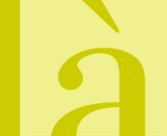 |
-
Firstly, and most importantly, come linguistic
usages. These are complemented with other variables with which
high correlation is maintained. Informal usages are particularly
highlighted, such as language usages with peers and in the home,
which would be the key factor for ordering the socio-linguistic
diversity of pupils. As well as informal usages, a high correlation
with three more variables is maintained: self-definition as
belonging to a linguistic group, the identification language
and the initial language. These are finally completed, less
strongly, with representations on linguistic usages, the language
of consumption of the communications media and oral usage with
teachers, both formal and informal.
-
The second key point shaping diversity, not
so closely related to the first, concerns written usages: the
language used in exams, the language of textbooks, classroom
materials or compulsory readings. These variables provide a
different focus but with less explanatory power. They do not
completely correspond with linguistic usages, as these fit into
the first factor, and they make it easier to read this socio-linguistic
complexity.
-
Thirdly, there is a much less important factor.
This concerns linguistic competences in Catalan, Spanish and
English.
-
Fourth comes the geographical origin of the
student and his/her parents.
- And a far-off fifth comes competence in English, which, together
with the parents' level of education, would determine a small
but appreciable differential factor.
3.1. Family language
and language with friends
"We've won the school, but have we lost the playground?"
(Vila 2004). This has been quite a widespread comment concerning
Catalan and Catalan schools, putting the effects of the school on
the inter-personal uses of the language in doubt. But different
studies have gone into depth extensively on this and have drawn
conclusions utterly opposing this argument. At least, in their strict
interpretation (Querol 2001; Rosselló 2003; Vila and Vial
2003; Vila 2004; Galindo 2006). They indicate that the institutional
use of the language in the classrooms has grown. And, in playgrounds,
Catalan is not the language of a tiny minority. Although its presence
is lower than Spanish, it is considerable, as the results of the
study we have dealt with up to now indicate. And the presence of
Catalan in playgrounds is not the consequence of a systematic change
of socio-linguistic habits by Catalan-speakers or Spanish-speakers
– rather the contrary. Possibly the socio-linguistic dynamics
resulting from the great migrations of the '40s and '50s are broadly
continuing. In all cases, what is perceived is the huge expansion
of spaces of contact between the native population and the old immigrant
population and, still further, the dilution of the limits between
the two, with the birth of new generations. These changes are interacting
with the extensive exposure of the new generations – children
of Spanish-speakers – to Catalan in the classrooms.
As the Language with friends section indicates, Catalan-speakers
have not abandoned the use of Catalan with their friends and Catalan
is not the language of a small minority in interactions between
peers (see Table 3). It is quite true that, in interactions between
friends, Catalan-speakers use Catalan less than Spanish-speakers
do Spanish. And the difference is not a small one: 11.7 percentage
points. See Table 5. Clearly, these lower rates of maintenance by
Catalan-speakers continue to erode the social use of Catalan. But
in no case does it amount to losing the playground.
Table 5. Language usages with friends
from school and from outside school, according to the initial language
| |
Initial Catalan-speakers
who always use Catalan |
Initial Spanish-speakers
who never use Catalan |
| With friends (from school) |
67,7 |
79,4 |
| With friends (from outside) |
66,1 |
81,8 |
Although the majority of pupils use their first
language in interactions with friends, a proportion too large
to be ignored habitually incorporate their second language. In
the case of the Spanish-speakers, the use of both languages is
lower: one in five. In the case of Catalan-speakers it is greater:
one in three.
In Graph 3 it can be seen that the children of Catalan-speaker
parents (first column) use Catalan with their friends, while the
children of Spanish-speaking couples (third column) use Spanish.
Despite this, there is quite a visible percentage of pupils in
both groups who not only speak their parents', language but also
use the other language.
|
